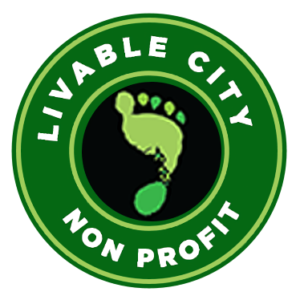Public rights-of-way – streets and alleyways – make up about a quarter of San Francisco’s land area. Projects that reclaim alleyways as neighborhood-serving public places with greening, traffic-calming, and pedestrianization are moving forward in 2015.
Living Alleys, also known as woonerfs, are shared space alleyways that prioritize pedestrian use and open space, using special paving, traffic calming, lighting, seating, green landscaping, and other design features to indicate that vehicles are visitors and pedestrians have primacy across the full width of the right-of-way.
Pedestrianized alleyways, also called paseos, are closed to auto traffic. Some alleyways, like Maiden Lane in Union Square, are pedestrian spaces for part of the day, but allow delivery and other auto access at other times.
Market-Octavia Living Alleyways
The 2008 Market and Octavia Neighborhood plan recognized the potential of Hayes Valley’s many alleys to become safe, green, and inviting public places.
Neighbors David Winslow and Loring Sagan created the Linden Living Alley, which won an award for innovation by Livable City in 2011. To build on the success of Linden Alley, the Planning Department created the Market Octavia Living Alleyways program, which unveiled its Living Alleys Toolkit this week. The toolkit serves as a how-to guide and pattern book for transforming alleyways in Hayes Valley and beyond.
Annie Street Plaza
In November of last year, a block of Annie Street between Mission and Ambrose Bierce streets was transformed into a Annie Street Plaza, with seating and landscaping. The Hearst Corporation, which owns the nearby parking garage, initially supported the plaza, but appealed several months later to tear out the plaza. After an outpouring of community support, Hearst dropped its appeal, leaving Annie Street Plaza secure for now for neighbors, workers, and visitors to enjoy.
SoMa Alleyways
SoMa’s pattern of big blocks and wide streets is crisscrossed with dozens of alleyways, which are home to SoMa’s many residential enclaves. The SoMa alleyways project got a boost in January, when the last SoMa redevelopment bond funds were allocated to the project. The second phase of the SoMa Alleyways project will install traffic calming treatments, lighting, landscaping, and new paving on six alleyways – Minna, Natoma, Tehama, Clementina, Shipley, and Clara – that run between 6th and 5th Streets. The first phase, which included Minna and Natoma between 7th to 6th streets and Moss, Russ, and Harriet between Howard and Folsom streets, was completed in 2011.
Action for Alleyways
Livable City has helped enact city policies that preserve and improve alleyways – requiring alleyways be lined with active, pedestrian-oriented uses, relaxing off-street parking requirements in dense alleyway neighborhoods, protecting sunlight to alleyways, allowing developments to satisfy public open space requirements by greening and pedestrianizing adjacent alleyways, and requiring new streets and alleyways in certain large developments on large blocks.
However, there’s more the City should do preserve and enhance our alleyways, and realize their potential as safe and green neighborhood-serving public places.
Protect alleyways from privatization. Dozens of San Francisco’s streets and alleyways disappeared during the Redevelopment era, with its mania for wide roads and superblocks. Newer City policies call for the preservation of small blocks and human-scaled streets and alleys. Unfortunately, city government sometimes abandons its urbanist principles for politically-connected projects, like the massive 5M project, which propose alleyway privatization.
Neighborhood alleyway plans. Neighborhood alleyway plans, the Chinatown Alleyways Master Plan, the Downtown Streetscape Plan, and SoMa Alleyways plan, allow neighbors to plan the future of their alleyways, and have provided an action plan for implementation. The City should support new neighborhood alleyway plans, revive and extend older plans like the Downtown Streetscape Plan, and commit staff and funding to implementing these plans.
Strengthen City support for alleyway projects. The city often makes it difficult to reclaim and transform alleyways. The city’s imposing bureaucracy, lack of clear standards and policies, and liability requirements can be a barrier to people-oriented projects in the public right-of-way. The City generally requires adjacent property owners to maintain living alleys and people-oriented street designs, but will maintain conventional automobile-oriented streets at public expense. The City should support green and people-oriented streets with improved standards and design and construction assistance, and better strategies for maintaining these places over time.





